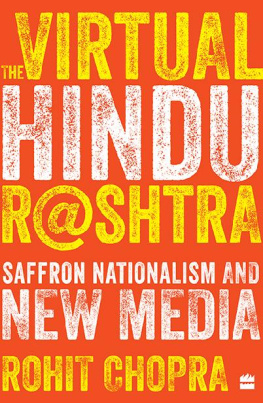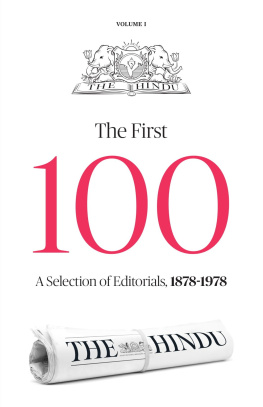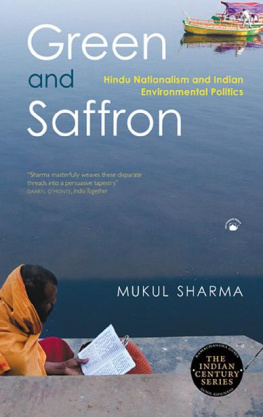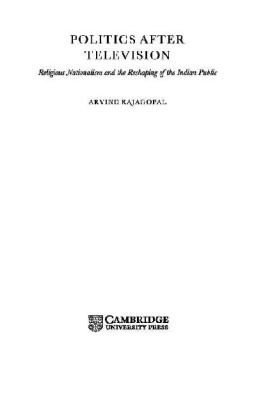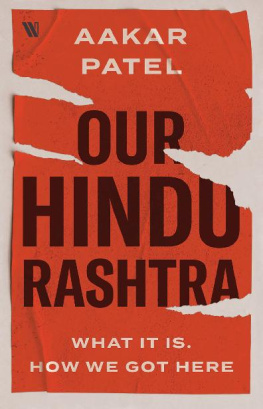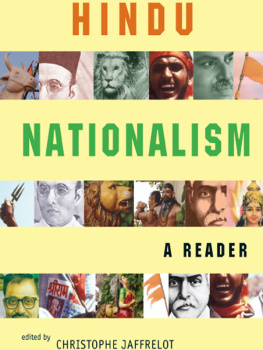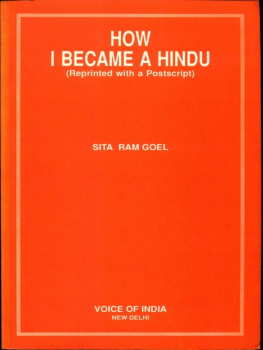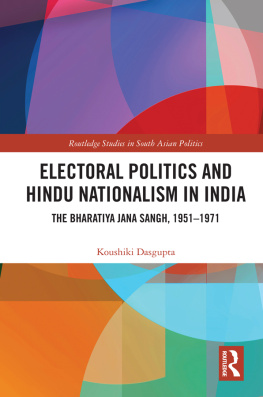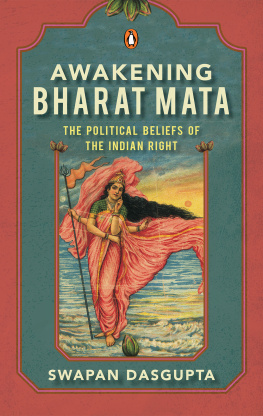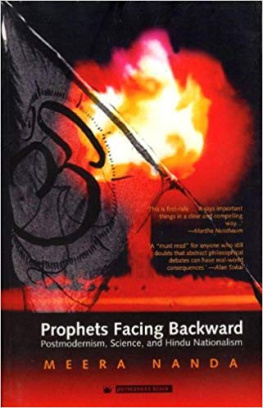B efore I embark upon my analysis of Hindu nationalism and new media, a description of my background as a researcher and commentator on the topic and an explanation of my approach may be helpful here. I have been studying the online Hindu Right and Hindu nationalism for the better part of two decades. My interest in it was sparked during the late 1990s when I worked for an Indian internet start-up, rediff.com. By this time the internet had just about taken root in India, even though we could only access the online world via 56K dial-up modems at what now seems like a glacial pace. This was also the phase of the first Silicon Valley boom and bubble, which would pop in 2000, the year I moved to the USA for graduate study at Emory University in Atlanta. I was intrigued enough by what I had seen of the Hindu Right online to want to study it seriously. The deathly serious commitment of supporters to the cause of Hindu nationalism, the global character of Hindu nationalist groups which spanned across India, USA, Australia, and the UK, the virulence aimed at Indian minorities, especially Muslim and Christian Indians, and at Muslims and Christians in general, the palpable anxieties about Hindu and Indian identities coupled with the aggressive display of territoriality with regard to the internet itself all struck me as deeply fascinating.
At Emory University, I was able to conduct research on the topic at a unique interdisciplinary centre, the Graduate Institute of the Liberal Arts (ILA), under the aegis of its culture, history, and theory track. The ILA, as it was known, offered graduate students a space to design their own dissertations across disciplines from the humanities and social sciences, and to work with scholars across several disciplines. My dissertation focused on Hindu nationalist communities online, and the thesis eventually would translate into a monograph, Technology and Nationalism in India . While there had been some scholarly work on the Hindu Right online, largely in the form of academic essays and book chapters scattered across journals and volumes, my book was the first full-length academic study of the phenomenon.
In my academic monograph, I argued that the specific form taken by Hindu nationalism online needed to be analysed in terms of two frameworks. On the one hand, it needed to be located against the backdrop of the long history of the relationship between technology and nationalism in India, going back at least to the British colonial era, when technology was associated with Western knowledge and superiority, and later was sought to be reclaimed by Indians as culturally Hindu and Indian. This desire lies at the roots of the anxiety that we can see even today among Indians who seek validation from the West by listing ancient Indian achievements in science and technology or insist on the Hindu origins of the internet or argue that NASA (the National Aeronautics and Space Administration) is mostly peopled by Brahmins. On the other hand, as I argued in the book, Hindu nationalism in cyberspace also had to be studied with reference to the sociology of internet use, that is, by examining the particular modes or practices and habits of online communication. This involved looking at a series of questions that, as it turns out, continue to hold relevance even today questions such as the extent to which online communication might promote disagreement and tension rather than fruitful exchange, the potential of the internet to isolate individuals and communities or to promote solidarity and bonding within and across groups, the extent to which online communication can contribute to mass-scale political movements and whether any such impact could be truly lasting or would be merely ephemeral. The larger general questions I examined in the book remain valid today, for example, what new theoretical perspectives and vocabulary does analysis of the internet demand? What meaningful generalisations about the internet can one offer without being reductive or simplistic?
Technology and Nationalism in India drew on social theory and engaged with assorted bodies of academic literature. Using a statistical technique, it also compared online Hindu nationalism with online Kashmiri and Sikh nationalism to identify what was unique to the first and what it shared with other subcontinental forms of nationalism. The book focused on websites as a prime source of Hindu Right discourse, given that the time period that it covered ended around 2006, when social media platforms had not yet become as central a part of the online space as they are now. It proposed a theorisation of archives of online conversation, exchange, and expression and then analysed these archives, which primarily consisted of Hindu nationalism on the internet as well as other types of South Asian nationalism or sub-nationalism.
In a very specific sense, this book picks up where the last one left off. It is not an academic monograph meant for a narrow scholarly audience but a general work which, I hope, will interest and engage a broad audience within and outside India. While informed by scholarship, including the latest relevant work, which is woven into arguments across the course of the book, it does not employ technical and specialised vocabularies. At the same time, for better or worse, this is a book written by an academic and is marked by that sensibility, for which I do not think any apology is necessary. I am not a journalist and should point out categorically that this is not a work of journalism. In keeping with my theoretical and methodological interests, the book focuses on the texts and contexts of archives of Hindu nationalism on the internet, offering a close reading and granular analysis of illustrative examples with reference to the wider political economy of global and national media. The book does not aim to be an exhaustive compendium of all themes in the world of Hindu nationalism on Facebook, Twitter, or the internet at large, choosing instead to highlight expressions of online Hindu nationalism that reveal and illuminate meaningful insights about the phenomenon. The particular examples of online Hindu nationalism that I parse in the book are analysed as representations of broader national and global trends in politics, culture, and communication. In terms of content, the most crucial difference between this book and my earlier work, reflecting developments in the sphere of media technology itself, is the strong emphasis in this text on social media and, more broadly, Web 2.0, that is, the interactive, meme-powered, viral web swirling with user-generated content. Jenkins, Ford, and Green in their book, Spreadable Media: Creating Value and Meaning in a Networked Culture, call this spreadable media, which in their view does not carry the negative connotations of contagion that the metaphor of virality bears. While the earlier incarnation of the web was not altogether bereft of interactive features, such as instant messengers and chat, the speed and cost of data as well as developments in mobile technology and the like since then have fundamentally altered the nature of interaction online.
I should also mention that since May 2014, when the Bharatiya Janata Party (BJP)-led National Democratic Alliance (NDA) coalition swept to power in a stunningly comprehensive victory, I have, through an unintended experiment of sorts, been privy to a close look at Hindu nationalism on social media. A day or so after the 2014 election results, I started a parody account on Twitter named RushdieExplainsIndia with the handle @RushdieExplains, which sought to explain political developments in India in a light-hearted manner through the voice and sensibility of an established and famed writer. The parody account, which I started as an inside joke meant for a few friends, went viral and got a fair bit of attention over the next year or so in the form of articles and interviews with Scroll, the Times of India , and BBC, among others. In 2016, I rebranded the account as @IndiaExplained, pivoting to a more directly political style of commentary. Since then, along with a friend and colleague based in London, who goes by the moniker @BuntyBolta, the project has expanded to include a podcast by the same name, in which we discuss stories from India that might be of interest to a global diaspora and to commentators interested in Indian affairs.

